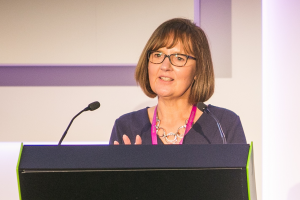The Institute of Health Visiting (iHV) is delighted to announce the appointment of Alison Morton as its new Executive Director with immediate effect.

Alison Morton, Executive Director, Institute of Health Visiting
Alison Morton joined the Institute as Director of Policy and Quality in 2019 to strengthen its work in Policy, delivering ‘Health Visiting in England: A Vision for the Future’ – iHV’s evidence-based blueprint to rebuild health visiting services. Alison transitioned to become Acting Executive Director when Dr Cheryll Adams CBE, previous Executive Director, stepped back in January 2021, supporting Alison’s transition into the role.
Welcoming Alison as Executive Director, Pamela Goldberg OBE, Chair of Trustees at the iHV, said:
“As well as a deep understanding of health visiting, Alison has more than proved her commitment and passion for the profession and the Institute. We worked with her over several years in her former roles before appointing her as Director of Policy and Quality and, more recently, as Acting Executive Director. She was also one of our first Fellows. Alison has vision, talent and energy and I am confident that under her leadership, the Institute will continue to thrive.”
Alison has an extensive background in health visiting, having held senior roles across national policy, 0-19 public health operational delivery and quality improvement, alongside teaching and research. In her previous roles, Alison worked as a Professional Advisor for Health Visiting in the Chief Nursing Directorate at the Department of Health from 2014 and then as the Best Start in Life Programme Manager at Public Health England.
Alison Morton, Executive Director at Institute of Health Visiting, said:
“I am both humbled and honoured to be appointed as the next Executive Director at the Institute of Health Visiting at such a time as this. In all of my work, my overriding ambition has always been to ensure that every child truly does have the best start in life.
“The ongoing pandemic has brought enormous challenges to families and the health visiting service and we are now faced with the long and important job of “Building Back Better” in order to reduce the inequalities that have been laid bare. There is no time to waste, children won’t get this time back. Prevention is indeed better than cure and we now need resources to be put where the damage is greatest and needs are most desperate – early intervention should be top of the list.
“As a health visitor, I have first-hand experience of the difference that an effective health visiting service can make to the lives of babies, children and their families, preventing small problems becoming big ones and identifying early when additional support is needed. Without this universal safety-net, which has been described as “the glue” in an integrated system of support, our youngest citizens are largely hidden from sight. As the Executive Director, I am looking forward to continuing the Institute’s important work started under the strong leadership of Dr Cheryll Adams CBE, being the voice for those that often have no voice and demonstrating the important contribution that health visitors make to numerous government priorities.”


